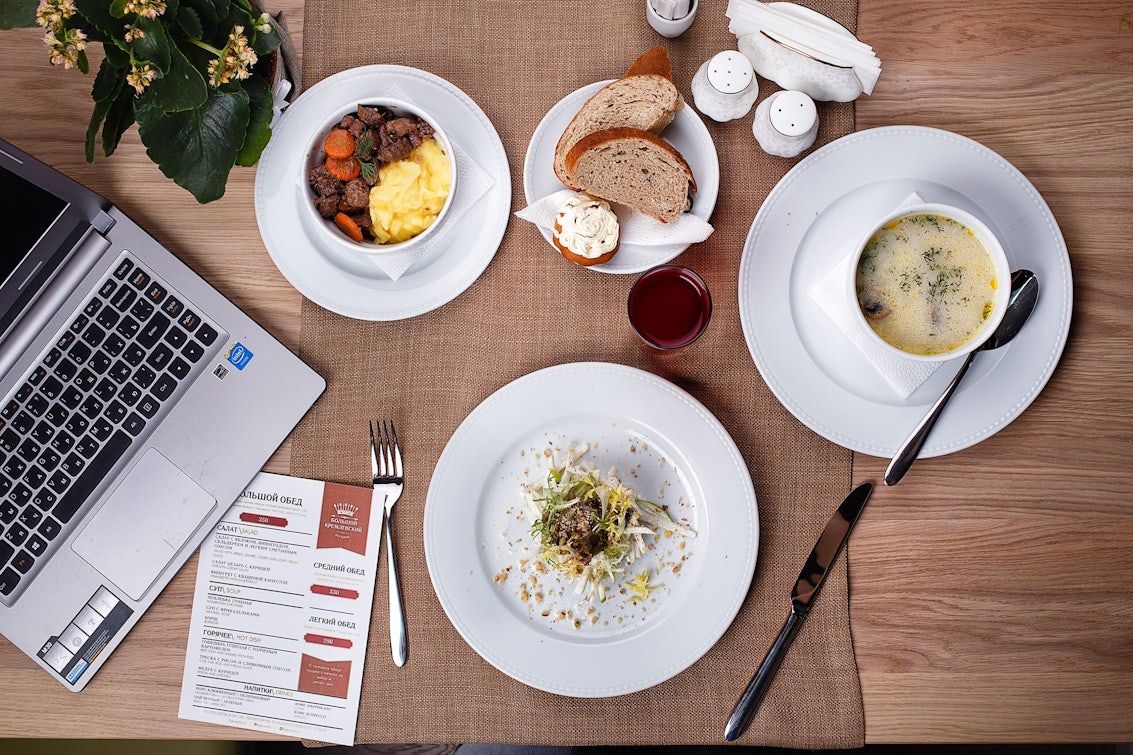Having a strong digital marketing and SEO strategy for your restaurant, cafe or bar will drive traffic to your website and get more bums on seats.
It’s no secret that the UK restaurant scene is thriving. With a new foodie addition appearing on our local high street at least every couple of months, the race to get diners through the door and maintain customer loyalty has never been more fierce.
It’s therefore more important than ever for restaurants to have a strong digital marketing strategy in place so that they can be found by prospective diners/ hungry Googlers both in their local area and further afield.
Successful digital marketing for restaurants is a powerful mix of using local SEO to maximise your restaurant’s real estate in the search engine results pages and drive traffic to your website, and through your restaurant door, coupled with the use of digital PR to create a buzz around your restaurant in the media and send signals of authority to Google’s RankBrain.
So, does your current digital marketing mix contain all of the correct ingredients? Does it include those that have been made available during the past couple of years, for example, recipe schema and rich cards?
This blog post will cover the essentials of SEO and digital PR for restaurants, as well as some newer techniques that will further expand the reach of your restaurant both in the search engine results pages and in the media.
This is a long read that will cover the following topics
- Local SEO for restaurants
- The importance of mobile
- Content
- Schema
- Digital PR
- Influencer marketing
- Social media
Local SEO: “We’re just round the corner you know…”
A local SEO strategy is essential for restaurants and can be quickly implemented using Google My Business and other tools.
A high number of restaurant-related searches are performed on a mobile device and with high local intent. A recent Google Mobile Moments Study found that restaurants are searched for ‘on the go’ more often than in any other location. Restaurants had the highest percentage of ‘on the go’ searches out of six categories, including arts and entertainment, shopping and travel.

What’s more, studies have shown that local intent is more prevalent in searches performed on a mobile device. In May 2016, Google revealed that nearly one third of mobile searches are location based queries.
So in order to convert users with the suggested desired outcome, you need to have great local SEO and a mobile responsive site, which we will get to later. For now, here’s how local SEO can get bums on seats in two different scenarios:
Branded search
Prospective diner: “This evening, I want to go to [insert name of your restaurant].”
Google’s Knowledge Graph is a great way to convert branded search queries into diners. Users already know that they would like to visit your restaurant and so you need to make it as easy as possible for them to do so.
Google My Business
The Knowledge Graph pulls in information from your Google My Business page, including a photo of your restaurant, map of your location, address, opening times, contact details, booking platforms, star ratings and even a link to your menus.
By registering with Google My Business, you can provide information that will increase trust in your brand and make it easy for users to make that all important reservation, or walk in off the street, If searching on mobile, the user can call to make a reservation or visit your website with a single click – it couldn’t be simpler!
You can add even more information to your Knowledge Graph by using schema to flag certain information on your website to search engines, such as your menu. We’ll cover this later in the blog.
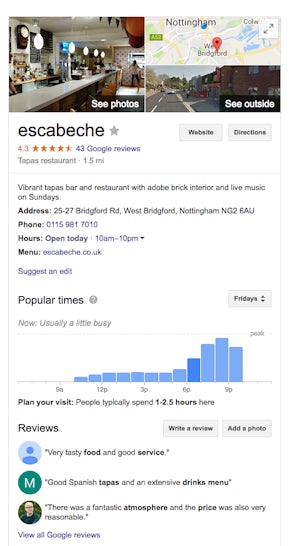
Unbranded search
Prospective diner: “I fancy tapas for lunch while I’m out shopping in Nottingham.”
A well-optimised Google My Business page also increases your chances of appearing in the Google Local Pack, which is presented to users entering unbranded restaurant related queries such as ‘tapas Nottingham’. Considering your Local Pack presence is absolutely essential in restaurant SEO as more often than not, this is SERP feature Google presents when returning results for restaurant-based searches. In addition to a detailed Google My Business listing, you also need to consider your Google reviews and amount of local citations to promote further visibility.
A listing in the Local Pack will feature your address and a photo of your restaurant, your star rating and number of reviews, opening times, cuisine type, this list goes on! Essentially, it provides more information than a standard listing in the SERPs.
If your restaurant is already popular with the press, even better! The local pack has recently started to list press articles that feature your restaurant, as illustrated below.
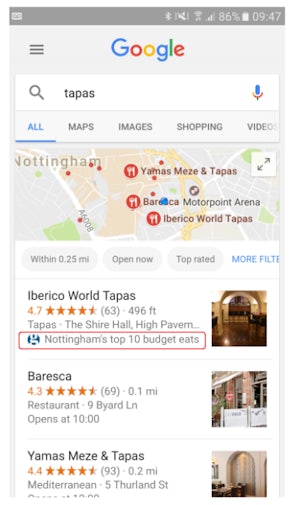
Third party platforms
The more real estate that your restaurant occupies in the SERPs, the more likely it is that the user will make a reservation with you.
You can increase this real estate by having a presence on relevant third party websites. Example of these include review sites such as Tripadvisor and FourSquare; booking platforms like Open Table or GoDine; and take-away services such Just Eat, Hungry House and Deliveroo.
Being listed on these platforms, which naturally rank so highly, enables your business to ‘travel with’ these high authority sites to the top of the SERPs even if your restaurant’s website isn’t the strongest. For example, if your prospective diner searches ‘curry nottingham’, your restaurant will be a potential choice thanks to its listing on TripAdvisor, which occupies position one in the SERPs, while your restaurant’s website may appear further down the SERPs.
Gaining listings on third party platforms is also a good way of increasing the amount of citations, the listing of your business’ name and address, around the web, which are local SEO ranking factor for Google.
In addition, if your restaurant uses OpenTable for reservations, or has a profile on TripAdvisor, this can be added to your Google My Business page and appear in the Knowledge Graph.
Mobile Considerations
When was the last time that you searched for the latest restaurant or a new lunch spot on your laptop? …..exactly, we don’t!
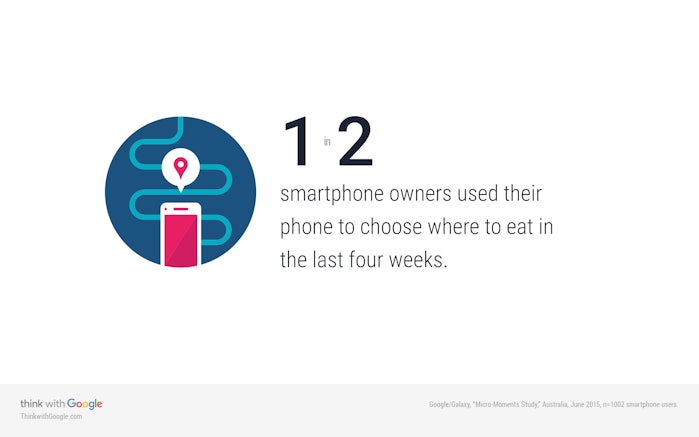
Restaurant related searches, particularly for restaurants or cafes within a small radius of the user, are more often than not performed on mobile due to their nature. Therefore, if your restaurant’s website is not mobile responsive, you’ll lose out – even if your local SEO is on-point and your website looks great on desktop.
Mobile usability is key to encouraging conversions in the restaurant industry. Once users arrive on your website via the SERPs, direct search or a paid ad, they’ll need to be able to use your site easily to quickly contact you and make a reservation without hassle: if they can’t, they’ll go elsewhere.
Visible contact details
Placing your contact details in a visible place on your site, the header and footer are recommended, means that users know exactly where to look for your contact details when they need them. Take a moment to ensure that your address details are well-formatted, in particular. It’s critical for this to be the same across the web, wherever you’re cited, in order to benefit your local SEO.
Book at the click of a button, navigate on a map
Make sure that any phone numbers of your site are ‘clickable’ and take the user directly to their phone’s dialler. The same goes for maps: if a prospective diner is taken to Google Maps when they click on your address, they’ll be more likely to walk into your restaurant.
A middle man to third party apps
If your website features logos to relevant third party apps, such as Deliveroo or Tripadvisor, the prospective diner can easily check out your great reviews on their phone, or order your food to their door.
Menus
I’m all for surprises, but I also like to view restaurant menus before I take my seat – it saves time! Your menus need to be easily found by every visitor, whether they’re searching on mobile, tablet or desktop. It’s good practice to host your menu(s) on your website site as HTML pages and to also give the option of a PDF download, which has been optimised for mobile.
Website content
Your restaurant’s website is the best platform to lay out your offering on a plate. A strong, mobile-responsive restaurant, cafe or bar website will illustrate your brand’s identity and build trust, which both attract new customers and maintain the loyalty of regulars.
From an SEO point of view, your restaurant might offer the best pad thai in town, but if its website isn’t optimised to send the right ranking signals to Google, your page won’t make it to the top of the search engine results. Make sure you have the following on-page SEO techniques in place on your website to ensure that Google recommends your restaurant to your local residents searching for ‘thai food’, for example, by ranking your site in the first page of the search engine at the top of the search engine results page:
Keyword targeting in website copy
If you’re planning a new website for your restaurant or modifying an existing one, start by creating a keyword map of your website. Each of your website landing pages needs to target a different keyword that will drive organic traffic from the search engine results page to your website.
Restaurants, cafes and bars are able to target a wide range of keywords relating to their offering, their chefs and their location. For example, a Greek restaurant in Leicester could target “greek restaurant”, “greek food”, “greek cuisine”, “mezze restaurant”, “greek food Leicester”, “[insert name of renowned Greek chef]”.
Creating a keyword map of a website allows you to see how you can structure your website to include enough landing pages and content to target your chosen keywords, and avoid keyword cannibalisation, which is one of the biggest hindrances of getting any landing page to the desired top three positions.
Title tags, meta descriptions, and header tags
Once you have created a keyword targeted sitemap, you need to outline your title tag, meta description and header tags on every landing page to ensure appropriate targeting is in place. While your title tags and header tags should explicitly target each focus keyword, your meta description should be used as a tool to engage the user in clicking through to your page in SERPs.
Gallery
Photos of food sell! Afterall, it’s a sensory product. Host a gallery on your site in a prominent position and keep this regularly updated with photos of the latest menus. This will have both PR and SEO benefit.
The use of media on a page is an important part of on-page optimisation as it encourages the user to stay on your page for longer, keeping your bounce rate low, average time on site high and preventing users from straying to your competitor’s website.
Ensure that images used on your website are SEO friendly. This can be achieved by optimising the file names, ALT texts and title tags to your restaurant photography with relevant keywords to increase the possibility of them appearing in image searches and driving organic traffic through to your website. You should also reduce the size of the JPG images on your website so that the media on your page doesn’t affect the load time, another nod to great user experience.
It may seem obvious, but if you are going to include photos of your food on your website, it’s worth spending money on a professional photographer to make sure that your offering is shown in its best light, quite literally! Plus photos taken on your website can also be used for digital PR activity, so it’s a good investment to make.
A gallery is a great way to further define your brand and add trust. Including an album of ‘behind the scenes’ in your gallery promotes transparency and gives prospective diners an insight into your restaurant’s life. By adding a social sharing functionality to your gallery you can encourage previous and future diners to share images of your food to their followers and expand your reach further.
Menus
It’s essential that users can easily find the latest versions of all of your menus when they arrive at your website – this can often make the difference between a reservation, or not. If you have different menus for different times of the day, or week, make this clear and ensure that your menus are available to view on-site as HTML pages and/or as mobile-optimised PDFs.
USP
Does your restaurant pride itself on serving locally sourced ingredients? Perhaps it specialises in seafood? Whatever your USP, you need to shout about it on your website.
A well-optimised page on this topic will not only provide information and act as a trust signal for users on your site, but it could rank for cuisine/ sourcing related search queries and drive organic traffic to your website.
Chef profiles
In the same way, if you have a well-known chef or a rising star working at your restaurant, you should create content around this. As well as being a ranking and organic traffic opportunity for searches around the chef’s name, a chef profile page can also be used to provide journalists with further information as part of digital PR activity.
Recipes
Recipes are a good choice of rich content to your website, particularly if your restaurant, cafe or bar specialises in a niche, for example, Persian cuisine, or gin.
Hosting recipes on your site not only builds trust and loyalty from previous and prospective customers, but recipes can also be marked-up with schema and be presented as rich snippets and rich cards in the SERPs, and ultimately drive organic traffic to your website. This will be addressed in the next section.
Trust signals
Restaurant, cafes and bars build and maintain their customer base on trust, you want to know that you will enjoy a good meal for the money that you pay. This type of business also earns lots of custom through word of mouth, and recommendations from friends, family and colleagues all rely on this established trust.
Optimise your website to include as many trust signals as possible, including embedded feeds from Trip Advisor to showcase reviews and your social media channels, to allow visitors to build trust in your business.
Schema for restaurants, cafes and bars
Use schema to tell Google and other search engines more about your restaurant business and to enable them to interpret your website content in the simplest way possible.
Schema are snippets of markup code that you wrap around certain pieces of information within your website to explicitly highlight to search engines what certain things “mean.” By using schema, you allow search engines to manipulate your content so it can be presented in creative ways in SERPs via integrations.
Restaurants, cafes and bars can benefit from adding the following two schemas in particular:
Organisation schema: provide more information to search engines
The organisation schema for restaurants can be used to tell search engines that you are a restaurant or other food/drink serving establishment, your location, your star rating and much more information.
Schema give the information on your website more functionality in the SERPs and add even more detail to your knowledge graph, therefore make your listing more user friendly and enticing!
In addition to location, opening hours and contact details, schema can be used to ‘flag’ all of the information listed below, and much more, and present it to prospective diners in the Knowledge Graph:
- Reservations – accepted or not
- Menu
- Cuisine
- Star rating
- Currencies accepted
- Price range
- Awards
- Logo
- Reviews
- Upcoming events
Organisation schema can be used on your website’s homepage as a bare minimum; ideally, the schema should be used across your site.
Multiple Locations?
The use of schema is even more important for restaurant chains that have more than one branch because you need to identify to search engines that each individual branch has its own address, opening hours, accessibility and even menu. This can be used in conjunction to your various addresses on Google My Business to further influence the correct local information being displayed.
The example below shows schema in action for Jamie’s Italian:
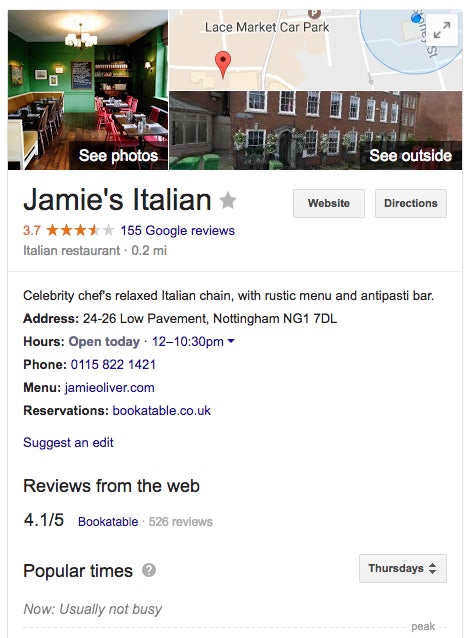
Recipe Schema
This is where things start to get really fun! If you have recipe content on your website, you can use schema to tell Google to provide a more detailed listing of your recipe in the SERPs by creating a Rich Snippet and now, Rich Cards, from this recipe content.
Recipe schema provides an opportunity for recipe content on a restaurant website to rank for recipe keywords, especially where niche cuisines are served. If your restaurant serves a niche cuisine, adding relevant recipe content to your website is a way to drive traffic to your website by catching the interest of diners that are looking to cook your cuisine for themselves one night, but who may want to dine out at your restaurant next week.
The following example shows the creation of a Rich Snippet from a recipe marked up with the correct recipe schema:

Rich Cards
Last year, Google introduced Rich Cards into the SERPs for recipes and movie information that are marked up with the correct schema.
Rich Cards appear as just that, a carousel of ‘cards’ at the top of the SERPs that present a selection of options to the user. If you have used schema in your recipe content, then your recipe could be included in this carousel, which occupies a high profile position that is likely to result in more organic traffic. At the moment, this integration is only available in the US but will no doubt be introduced in the UK in the near future.

Google provides this advice on using structured data to provide rich snippets, rich cards and host-specific lists for your recipes, cooking and preparation times, reviewer ratings and nutrition information.
Digital PR
Once you’ve optimised your website to expand your real estate in the SERPs and to provide as much information as many people as possible, digital PR activity allows you to take your restaurant’s brand and message even further.
Digital PR for restaurants creates that all important, revenue-increasing buzz, both online and offline – think of it as ‘word of mouth 2.0’!
This online coverage will generate the backlinks, which both send relevant referral traffic to your website and increase the authority of your site. In addition, articles featuring your business could rank for cuisine or chef related searches, and send further organic traffic to your website.
Restaurant PR Toolkit
Mouth-watering photos
A good selection of high-quality, high-resolution photos of your food and drink offering is essential. Have these on file before you start your digital PR activity as it’s unlikely that a journalist will feature a story about your food without great pictures.
Video
Including a video in your pitch to a journalist will make it more attractive and more likely to be featured. Videos of chefs making recipes do particularly well. Avoid salesy, heavily-branded videos at all costs.
Recipes
Having an arsenal of recipes written up with some great pictures, and video, means that you can quickly pitch these in to journalist requests and for opportunities.
Awards
Make sure that award logos are added to your website, and at the end of press releases and outreach emails, where they will act as a trust signal to journalists and website visitors alike.
Spokesperson
Spokespeople could be the manager of the business and the chef, who can both provide comment for articles on different topics. Choose a spokesperson, or two, for your business and stick with them to ensure consistency in your online coverage.
Journalist monitoring
Set up a system for tracking journalist requests so that you never miss a journalist enquiry!
Journalists in the lifestyle sector are often looking for review opportunities, photos of food, recipes, and comment. A free way to do this is to monitor #prrequest and #journorequest on Twitter. A larger investment would be to sign up to Response Source or Gorkana, which we use heavily at Impression to secure coverage for our clients.
Once you’re equipped with your tools, you’re ready to secure the coverage, which is available for restaurants, cafes and bars in many different formats.
Press releases for new menus, new locations
Press releases are a time effective way to get news about your restaurant into relevant online media and in front of prospective customers. This news could be a new menu launch, a new restaurant location or the hiring of a new chef.
A well-written press release will provide a journalist with the essential information on a news story as well as comment from your key spokespeople. You can read our advice on writing press releases in our ‘art of the press release’ blog. Include relevant links in your press release to increase the chances of receiving a backlink from the coverage.
To maximise your chances of coverage using a press release, include the written copy in a press pack that also includes photos and videos. This is all a journalist needs to feature your story.
Recipes
Recipes are another quick way of securing coverage for your restaurant and positioning it as an authority on a certain type of cuisine.
Like a press release, a recipe will benefit from being part of a ‘recipe pack’ that includes the recipe, featuring timings and advice on sourcing ingredients, as well as images of the finished dish and a professionally-shot video of the recipe being made by your chef, if possible.
This ‘recipe pack’ can then be pitched in response to journalists’ requests featured on Twitter or accessed through Response Source/ Gorkana. It could also be pitched out to online sites that collate recipes; for example, SORTEDFood.

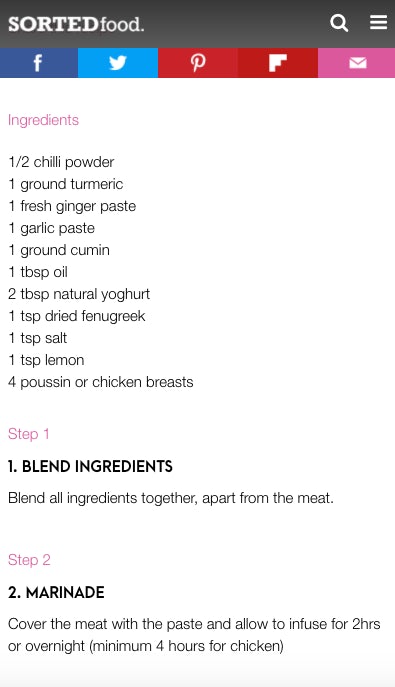
Profile building
There are two main ways to raise the profile of your restaurant/ bar and its chef, mixologist or manager in the press:
Thought-leadership
Thought-leadership coverage can take the form of a quote in a wider article that expresses a spokesperson’s opinion on a certain topic, for example the courgette crisis, or a full-length article authored by the spokesperson themselves.
Look out for comment opportunities on #prrequest and #journorequest, or try to pitch in comment to journalists on topical issues before the write their articles.
Interviews
Interview are another successful profile-building technique. They are a chance to create further signals of transparency and trust as prospective diners can read about your restaurant and its offering from the horse’s mouth, so to speak.
There are many sites that feature chef interviews and profiles, including Great British Chefs and SORTEDFood.
Reviews
The best way to create trust and interest in your restaurant is to receive a glowing review from a high-profile food critic. This won’t happen overnight, however, and relies on good contacts, and good food!
Start small by inviting journalists from your local press to review your latest menu. Restaurants normally offer a complimentary meal and drinks for a journalist +1. Once you’ve covered your local area, and shared the reviews on your website and via social media, you should start to contact food critics from the national press.
Begin by interacting with these journalists on social media, let them know where you are in the country and they may call in if they’re close by.
Influencer marketing
Influencer marketing is the art of working with influencers, journalists, bloggers and vloggers who cover a specialist area and have a large following on social media, to leverage the trust that they receive from their followers to market your offering to an engaged and relevant audience.
In practice, this means working with bloggers and vloggers to produce relevant content that engages their followers, your target audience, and results in increased awareness of your brand via their social shares, and ultimately, more business.
Influencer marketing relies on building strong relationships with relevant influencers. For restaurants, cafes and bars, starting these relationships couldn’t be easier: invite your chosen influencer in to review your offering!
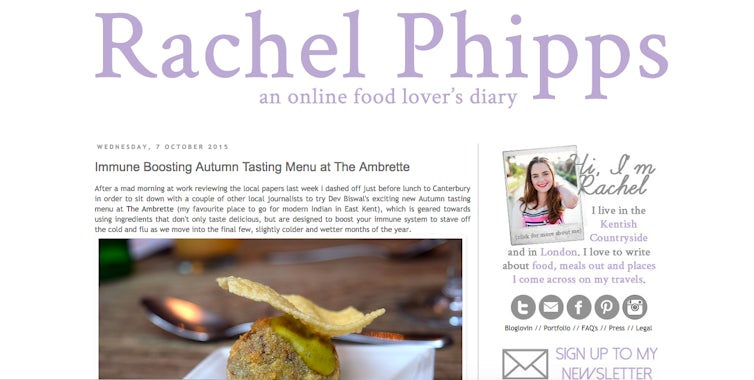
If they live further away, you may need to establish a relationship on social media first of all and demonstrate the strength and speciality of the offering to persuade them to make the journey.
Start small and work your way up. Build a good rapport with your local food influencers and they will bring their followers through the door. You can then move on to targeting national influencers, including food critics, at a later stage.
Another way to approach influencers is to organise an influencer event. For example, you could host an influencer dinner and invite a selection of local bloggers to sample a new menu together. This type of event is a great way to build strong relationships with influencers in an informal atmosphere.
When working with influencers, it’s important to adhere to guidelines ICPEN (International Consumer Protection and Enforcement Network) on the labelling of content and social media activity.
Social media
Finally, restaurants/cafes/bars should maintain active social media to create and foster relationships with their customers, and expand their reach through shared activity, which can also be seen as ‘word of mouth 2.0’!
Social media marketing for restaurants warrants a blog post of it’s own, but there are couple of important areas to cover:
Content
Content shared on social media should be authentic and consistent in tone, whether this is a tweet, a status or an Instagram post. Develop a ‘voice’ for your business on social media that defines the character of your restaurant and engages your audience.
Aim to share every piece of coverage about your business, every article, interview or featured recipe is a trust signal: you have gained approval from the media.
Photos are a great way to further define your business in the social media landscape and create a sense of transparency. Why not take a photo of the chef prepping for evening service and share this with your followers? Or a family who enjoyed their birthday meal at your restaurant? (with their permission, of course!) Photos encourage engagement and sharing activity.
Timing
The timing of your social media activity is important. Try to be most active at the times when you’re thinking about lunch/ dinner, as it’s likely that prospective diners will be doing the same!
This article from Sprout Social provides more insight into timings for social media activity.
I hope you found that journey into digital marketing for restaurants to be a useful read. If you would like any more information on the areas covered, please call 01158 242 212 to speak to a member of the team, or email hello@impression.co.uk
